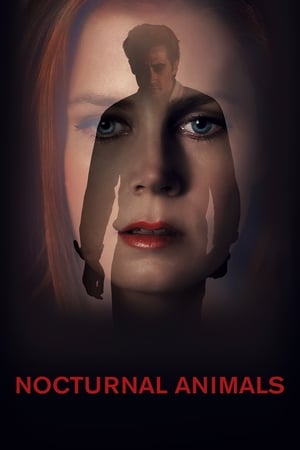Nocturnal Animals
Mindfuck Level
Alternative Genre: Neo-Noir Psychological Thriller
MPAA Rating: R (Restricted)
IMDB: 7.5/10
The Plot Without the Twist
Susan Morrow is a successful art gallery owner in Los Angeles trapped in an unhappy marriage with her unfaithful doctor husband Hutton. Her perfectly curated life is shattered when she receives a manuscript from her ex-husband Edward after twenty years – a novel titled “Nocturnal Animals” dedicated to her. As she reads the disturbing story, she’s haunted by memories of their shared past and must confront the consequences of her past decisions.
Movie Quote
Film Analysis Notes
Tom Ford creates a visual masterpiece with “Nocturnal Animals” that masterfully blurs the lines between reality and fiction. The film’s narrative structure operates on three levels: Susan’s present reality, her memories of Edward, and the brutal world of the novel she’s reading[3]. Ford uses a deliberately exaggerated aesthetic and pompous imagery that particularly stands out in the vast Texas landscape, creating a hall of mirrors of motifs and references between art and reality.
The parallel narrative threads reveal Ford’s expertise as a fashion designer: he stages the glittering art world with its conventions as a counterpoint to the raw violence of the novel. This isn’t about the “mendacity” of an industry as a “worn-out trope,” but about a Freudian underworld that attacks the viewer’s nerve endings. Amy Adams’ casting as a contrasting figure resembles Colin Firth in Ford’s debut “A Single Man” – the disturbance is beautifully contrasted with the polished facade.
Influences & References
- David Lynch – The nocturnal highway sequence is an inevitable reference to Lynch’s surreal dreamscapes
- Alfred Hitchcock – The psychological tension and viewer manipulation follow classic Hitchcockian principles
- Edward Hopper – The visual composition and portrayal of loneliness in urban spaces recalls Hopper’s paintings
- Austin Wright – Based on the 1993 novel “Tony and Susan,” which provides the complex narrative structure[4]
Soundtrack Spotlight
Abel Korzeniowski’s music underscores the film’s dark atmosphere and enhances the emotional manipulation of viewers through subtle soundscapes.
- Key Track: “Nocturnal Animals”
- Composer: Abel Korzeniowski
- Standout Moments: The desert sequences are enhanced by minimalist string arrangements
Doc’s Analysis
If you liked this movie…
Gone Girl
2014 | David Fincher
Also a story about revenge in marriage that works with clever narrative structure and psychological manipulation.
Mulholland Drive
2001 | David Lynch
Lynch’s masterpiece of nested reality levels and the dissolution of dream and reality.
A Single Man
2009 | Tom Ford
Ford’s directorial debut about loneliness and loss, visually as impressive as “Nocturnal Animals”.



